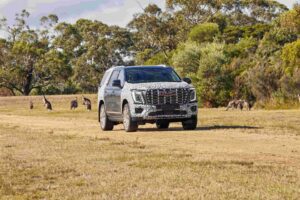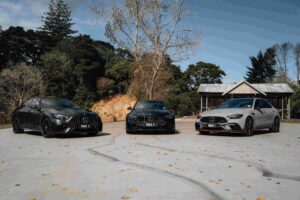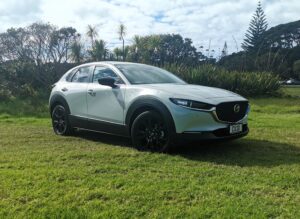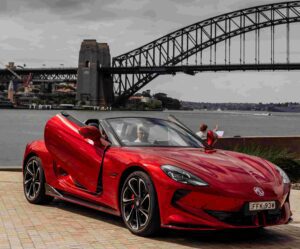Who can remember the old Mitsubishi L300 Van? I certainly can. Growing up, I would always see the L300 as being a very popular way of lugging things from place to place, in fact its popularity could almost be on par with the Toyota Hiace. Tradies and fleet buyers loved them.
Fast forward to today and there is a new van from Mitsubishi, the first one in seven years to be exact. The L300 went out of production in 2015, where upon 38,806 units were sold during its 35-year production run. The new van is called the Express, and there is more to it than meets the eye.
Those familiar with the Renault Trafic will already be drawing comparisons between it and the new Express. One could say the two could have been separated at birth, well actually, they kind of were.

Yes, the Express not only shares its platform with the Trafic, but a lot of the exterior and interior. This is a result of Mitsubishi having joined the alliance of Nissan and Renault, so for Mitsubishi to source a platform for a new successor to the L300 from what was the most popular new van in Europe was ideal.
Kiwi buyers only get the Short Wheelbase variant of the Express, but you get the choice of two turbo diesel engines and manual or automatic variants. The $47,990 RRP manual is a six-speed and is mated to a 1.6L twin turbo diesel engine producing 103kW and 350Nm of torque. The six-speed auto, my test van, retails at $52,990 RRP and gets a 2.0L diesel engine with a single scroll turbo. Power is rated at 125kW and torque is increased by 40Nm to 380Nm all up.
No matter which you choose, you still get the same levels of kit. This includes cruise control, speed limiter, parking sensors, Bluetooth, reversing camera located in the rear-view mirror, air conditioning, daytime running lights, two USB ports and 16-inch steel wheels.

You also get a cellphone mount as standard, but it took a while to wrestle my Samsung Galaxy J3 to fit. While this is certainly all you need and then some, the lack of satellite navigation, touchscreen infotainment screen, and a lack of safety kit like blind spot monitoring and lane assist, means the Express is somewhat lacking compared to the likes of the Toyota Hiace and Hyundai iLoad.
The Express claws back with plenty of interior space. You have three seats up front and oodles of cubbyholes to put your belongings. The dials themselves are easy to read, especially the centre digital speedometer, and you sit upright with a full panoramic view of what’s ahead.

The switchgear will be familiar to any Trafic owner, especially the volume and audio source controls attached to the steering column. That said, everything works well and once you get your head around where everything is, its very intuitive.
So, how much of whatever can you lug in the Express? Well, 5.2 cubic metres to be exact. The automatic gets a payload of 1080kg while the manual gets 35kg more at 1115kg. Unladen the Express auto weighs in at nearly two tonnes, however this increases to 4700kg when full to the brim. However, during my time with the Express, the heaviest thing I was able haul was a couple of Pizzas from Dominoes. They weighed a bit you know??

You have 12 anchor points in the rear for hooking straps and dual sliding doors make for easy loading. Around the back, the rear barn doors open at 160 degrees, just remember to close the left one first after loading. What I did really like about the Express was the solid steel bulkhead with glass window behind the driver. This, when on the move, resulted in a van which was actually rather quiet.
Some past commercial vehicles clatter and bang like an allotment shed on a windy day while on the move, but moving off in the Express, this writer found it to feel as tight as a drum. In fact, the only bit which didn’t complement the aforementioned quiet was the central self-locking system, which clicked rather loudly.

Torque delivery kicks in at around 1,500 rpm. You feel it too, for when the revs rise from that 1,500 rpm, you surge forward briskly. The Express runs out of puff at around 4,000rpm, but then again, you will seldom ever rev it that hard. The six-speed automatic gearbox provides decent changes with no real jerkiness to speak of and the steering is nicely weighted and communicative. It also feels much more playful than many others in this class.
At 100km/h you sit quite comfortably at the 2,000rpm mark. Mitsubishi claim fuel consumption figures of 6.2L/100km for the manual and 7.3L/100km for the automatic. I managed to get it down to an average of 7.5L/100km while in Eco mode.

In summary, while severely lacking in standard safety equipment, the Mitsubishi Express is still a decent and engaging drive, and sports a decent amount of space front to rear. Its appeal rests with buyers who want something uncomplicated and able to get the job done. Time will tell if the spiritual successor of the old L300 carries on its fathers legacy.
VERDICT: 3.5/5










